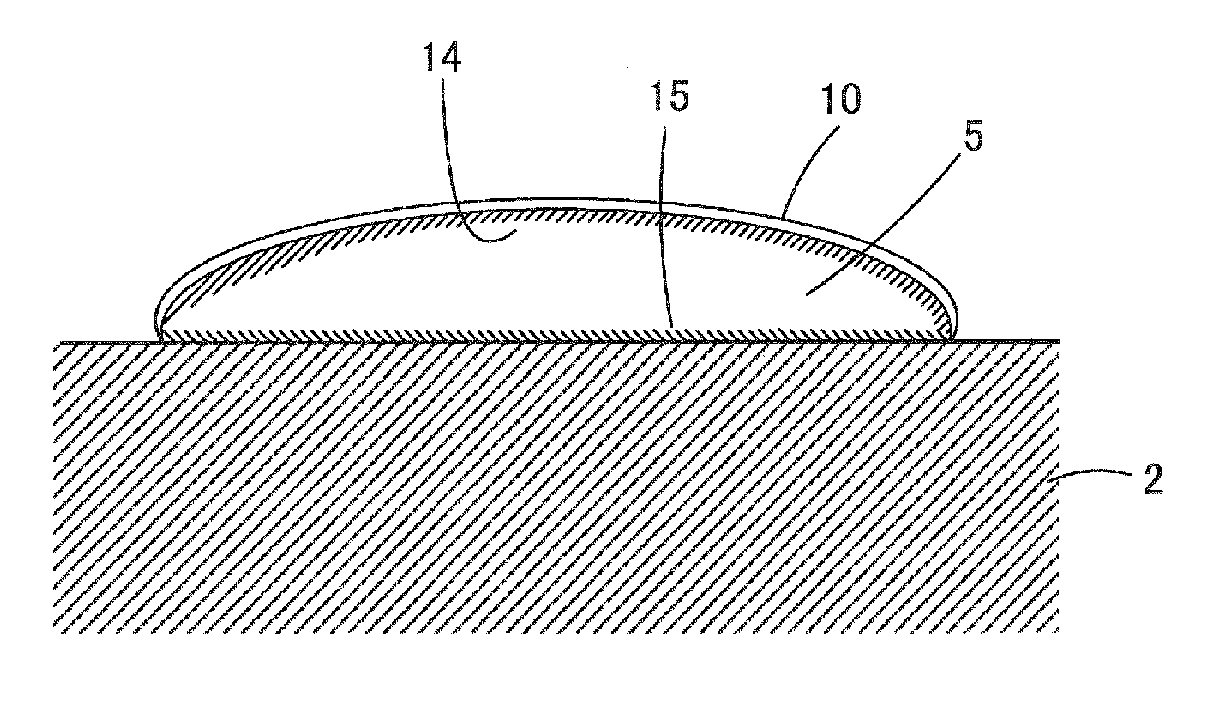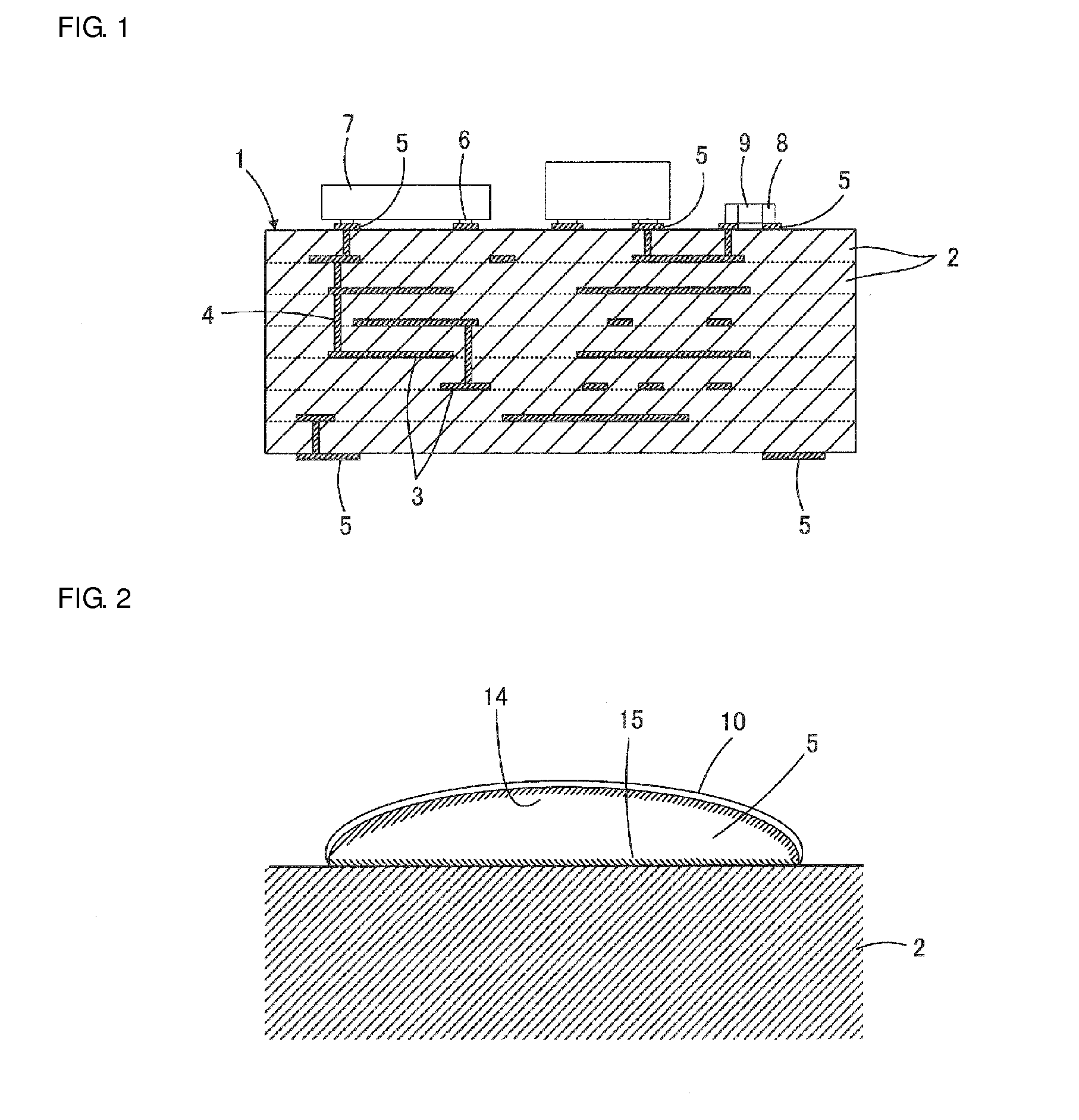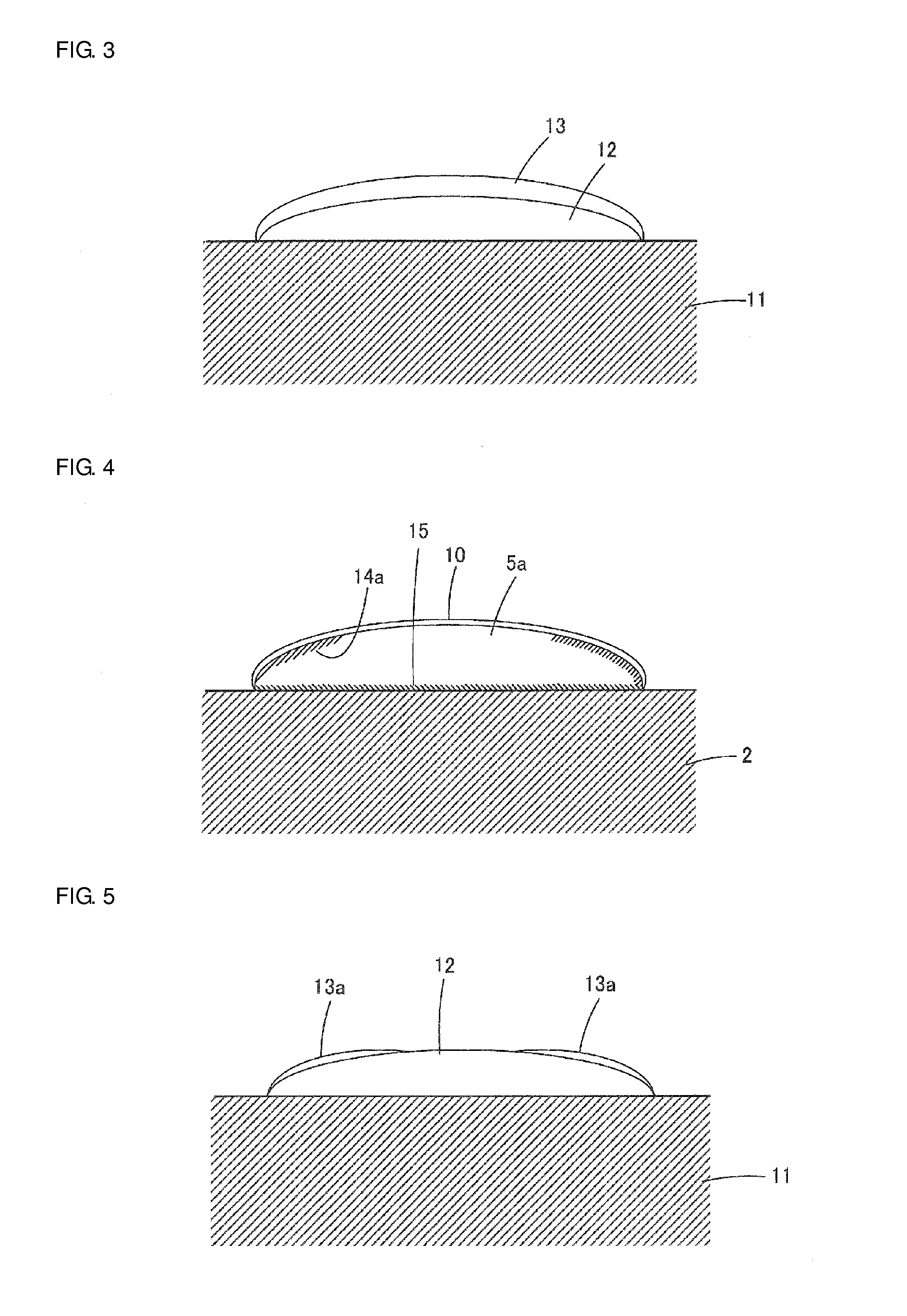Glass ceramic substrate and method for producing the same
a technology of glass ceramic and substrate, which is applied in the direction of fixed capacitor details, fixed capacitors, coatings, etc., can solve the problems of reducing the conductivity of the surface electrode on its surface, reducing the conductivity of the surface electrode, and making the plating layer more likely to peel off, so as to improve the coplanarity of the glass ceramic substrate and reduce the amount of glass. , the effect of reliable reduction of glass
- Summary
- Abstract
- Description
- Claims
- Application Information
AI Technical Summary
Benefits of technology
Problems solved by technology
Method used
Image
Examples
embodiment 1
[0031]The following describes a glass ceramic substrate 1 of the invention with reference to FIG. 1.
[0032]The glass ceramic substrate 1 is a multilayer ceramic substrate and has a laminated structure containing a stack of several glass ceramic layers 2. The glass ceramic substrate 1 contains various wiring conductors, including those that form passive elements such as capacitors and inductors, and those used to establish connections such as electrical connections between elements. Some of the wiring conductors are placed in the glass ceramic substrate 1, and some others are on the outer surface.
[0033]Examples of the wiring conductors placed in the glass ceramic substrate 1 include internal electrodes 3, which are formed along the interfaces between the glass ceramic layers 2, and via-hole conductors 4, which are formed through the glass ceramic layers 2 to provide interlayer connections.
[0034]Surface electrodes 5 are wiring conductors formed on the surface of the glass ceramic subs...
embodiment 2
[0048]The following describes Embodiment 2 of the invention with reference to FIGS. 4 and 5. FIGS. 4 and 5 correspond to FIGS. 2 and 3, respectively. In FIGS. 4 and 5, like reference signs represent like elements in FIGS. 2 and 3. The details of the elements already described herein are omitted in the following.
[0049]A characteristic of Embodiment 2 is that the second paste film 13a covers only the edge portion of the first paste film 12 in a plan view like a picture frame as illustrated in FIG. 5. The configuration of the first paste film 12 and the second paste film 13a in a plan view is as in FIG. 6 (C), which is described later herein.
[0050]In Embodiment 2, in which the second paste film 13a is formed like a picture frame, the abundance ratio of non-vitreous inorganic oxide is relatively low in the edge portion of the surface electrode 5a in a plan view, i.e., the region derived from the second paste film 13a. As a result, the abundance ratio of non-vitreous inorganic oxide in t...
PUM
| Property | Measurement | Unit |
|---|---|---|
| particle diameter | aaaaa | aaaaa |
| thickness | aaaaa | aaaaa |
| thickness | aaaaa | aaaaa |
Abstract
Description
Claims
Application Information
 Login to View More
Login to View More - R&D
- Intellectual Property
- Life Sciences
- Materials
- Tech Scout
- Unparalleled Data Quality
- Higher Quality Content
- 60% Fewer Hallucinations
Browse by: Latest US Patents, China's latest patents, Technical Efficacy Thesaurus, Application Domain, Technology Topic, Popular Technical Reports.
© 2025 PatSnap. All rights reserved.Legal|Privacy policy|Modern Slavery Act Transparency Statement|Sitemap|About US| Contact US: help@patsnap.com



